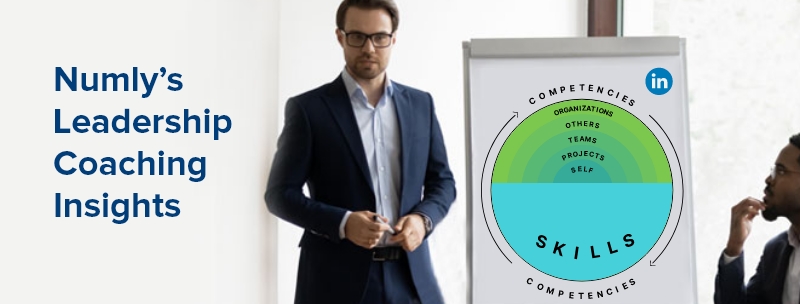Leadership is under fire. The rules that worked in the past seem broken as we move into a normal characterized by large scale remote working owing to the COVID-19 pandemic.
Leaders who thrived within the portals of traditional offices are having to navigate new territory. This unchartered territory of having to lead both virtually and remotely demands the emergence of a new leader – one who is no longer a ‘remote boss’ but is instead a ‘virtual leader’.
Read: How Has the Role of Leadership Changed with COVID-19?
Leadership during crisis
When it comes to a crisis, most assume that what a leader must deliver is a robust response plan. While this is true, what happens when a crisis continues?
We saw how COVID-19 upended the world of work, turned the economy upside down, and ballooned into a crisis of an unprecedented scale. In these times, instead of looking for predefined response plans, leaders need to develop their mindsets and behaviors that will help them look ahead and adapt. And while leaders might come under undue pressure from stakeholders and might need to come up with strategies to alleviate the financial implications of the pandemic, they need to focus on developing their empathy so that these pressures do not get placed on their employees.
During crisis and uncertain times, compassion and empathy are two invaluable traits for leaders to develop since it is the job of the leader to placate the fears of their employees.
As the dust begins to settle on the upheaval caused by the COVID-19 pandemic and the workforce adapts to their remote work setting, leaders have to make sure that they not only ensure business continuity but also drive engagement and performance of their workforce.
Leadership has to move from its traditional avatar where the leader was the boss. Consequently, leadership styles also have to move from the traditional direction-driven style and adopt a more guidance-driven approach – one that is focused on guiding employees to excel by enabling and facilitation.
The biggest reset in the role of the leader is perhaps the shift from a ‘command and control’ approach to one that ‘inspires and coaches’.
Leaders have to quickly adapt to new leadership styles to remain effective in this new world of work. Quite naturally this demands a shift from being the conventional and traditional boss to becoming leaders who enable and empower.
Virtual leaders thus need to be more empathetic and greater at communicating with their employees. They need to capably guide, develop, empower, enable, and coach their teams to build authentic connections.
Leaders are now coaches
In the post-COVID world, leaders will not only have to give direction and purpose to the organization but have to also coach the employees to adapt to this new world of work.
- Coach to build shared purpose: Along with ensuring that the employees are achieving their goals, they have to assume the responsibility to drive employee wellbeing and drive a feeling of ‘shared purpose’. It is only when employees connect with the shared purpose that they become more invested in the organization’s growth story. And it is when employees resonate with this shared purpose that they put in discretionary effort – it is this effort that shows the quality of your employee engagement levels.
- Coach to develop the leadership pipeline: One of the key responsibilities of leaders is that of creating a robust leadership and succession pipeline. In the absence of physical connections, leaders also have to now become actively invested in coaching their employees to move further along their career paths.
In this virtual setting, leaders have to also ensure that this pipeline is filled with the right candidates. In this new normal, leaders have to now leverage data to identify the right candidates to plug into the pipeline. While the high-performing employees do rank higher in the eligibility criteria, leaders have to dig deeper and assess if they have the skills to lead. Leveraging tests like 16-Personality Factor tests or behavioral skills assessments, leaders can gain insights into the skill gaps and give them the tools to navigate the chasm via coaching.
- Coach to become self-motivated and action-oriented: In this virtual environment, leaders also have to coach employees to map expectations and outcomes. Helping employees to look at the big picture, understanding how they contribute to this picture and how they make a difference helps the employees remain motivated and connected with the organization.
Unlike a physical office where news on the latest developments gets around easily, in remote environments, leaders have to help employees understand and manage their goals and expectations and help them become more action-oriented instead of instruction-driven.
- Coach to drive agility and responsiveness to change: Leaders have to coach their teams to become more agile to change and drive adaptability as they settle into this new world of work. Empowering them with the right tools, technologies, platforms, and coaching resources will play an important role in driving engagement and consequent organizational success. They need to help employees devise ways to become more visible, help them drive impactful work, and ensure their career progression.
- Coach to make the workforce more independent: Leaders have to coach employees and team members to improve their planning and communication skills to ensure the right expectation setting. For this, helping remote workers identify the correct mechanisms to set the right deadlines, margins and expectations go a long way to make the workforce more independent in their work without resorting to micromanaging. Helping employees become better decision-makers gives them more autonomy in their work.
Leaders need coaching to coach right
Even a cursory glance at the above makes it clear that leaders now need to develop a new vocabulary – one that is authentic and is rooted in empathy. Organizations thus need to take a close look at their leadership coaching strategies so that leaders can foster employee and organizational growth by helping their teams manage their work better.
Read: Want to Create A Pipeline of Leaders? Train Managers to Become Better Coaches
Day-long leadership coaching sessions are unlikely to help leaders, especially because the rules of the game have changed completely. Virtual leaders need to focus on driving authenticity. They need to become more observant, trusting, caring, and empathetic in their leadership styles and build the right connections with their employees. To achieve all this, there has to be a change in the mindsets and behaviors of leaders.
As leaders also become coaches to their teams, they have to learn to communicate more clearly and with empathy. They have to demonstrate that they are not only interested in employee performance but are equally invested in employee well-being. This brand of leadership becomes all the more essential as in a remote setting, leaders have to guide work relationships with clarity so that others are inspired to become deeply invested in their work.
One of the most important things virtual leaders have to build is trust. They can build and enjoy this trust when they learn to trust themselves. Hence, they have to learn to let go of the art of micromanaging and inspiring the team to become more accountable towards their work. Along with this, leaders have to adopt a growth mindset and enable the same for their employees. They also have to learn new methods to individualize interactions and empower employees to work with autonomy to drive accountability and ownership in a virtual setting.
It is thus essential to coach leaders to mobilize their existing environments to enable new competencies in their workforce by using data. They have to develop their emotional intelligence to build resilient teams. Leaders also have to be coached to drive a sense of shared purpose across the organization’s value chain and become more authentic and intentional in their leadership styles.
Contact us to evaluate how our AI-powered coaching platform can help your organization leaders prepare to lead the workforce in the new world of work and develop their leadership vocabulary to lead the employees and the organization to success.

